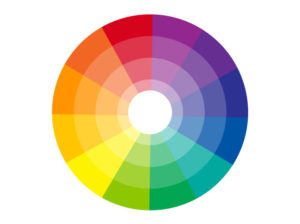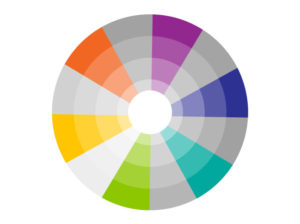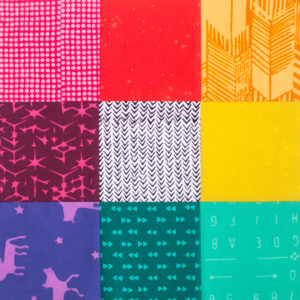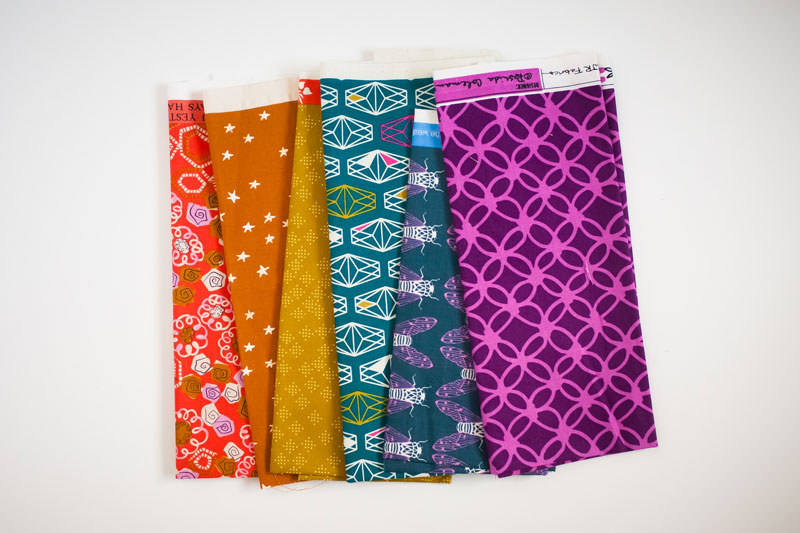Once you have established the six color rainbow, you can then use the adjacent primary + secondary colors to create tertiary colors. The six tertiary colors can be added to the six rainbow colors [primary and secondary colors] to make the 12 color wheel.

For your block this month, you will want to focus on only the six tertiary colors; red-orange, yellow-orange, yellow-green, blue-green, blue-violet, and red-violet.

YOUR TERTIARY COLORS BLOCK
Again, you have only six tertiary colors to work with on a block that may have more than six changeable components. You can select multiple prints of the same color or you can add in different values of some of the colors.

Tertiary colors can be fun to work with because there is a lot of flexibility in the actual hues. If you tend to like warm colors then you can select blue-green and leans more towards green and red-violet that tends closer to red. This block is where you can start really making a mark with your personal color preferences. As seen in our sample block, magenta was used as a value of red-violet. Let yourself go a little crazy with your fabric pulls this month, but try to remember to really illustrate the tertiary colors; red-orange, yellow-orange, yellow-green, blue-green, blue-violet, and red-violet. Here are a few more fabric pulls that would work well for a tertiary block.
Get your tertiary fabrics in order and assemble your block. We can’t wait to see what you come up with. Please share with us using the hashtag #bouldermqgcolorstudy19.



